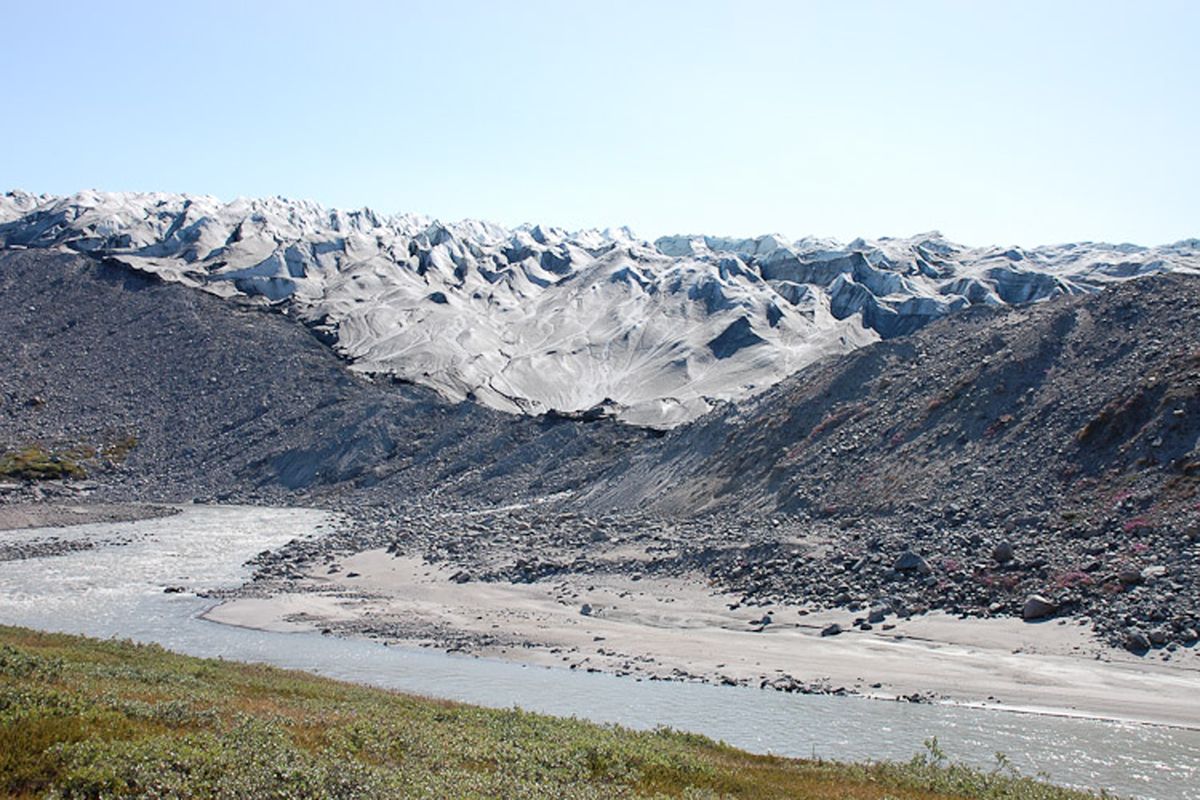UI professor joins ice melt research
Clouds above Greenland may hold warming clues
The Greenland ice sheet, shown above, is reportedly losing 200 million cubic meters of ice a year. A University of Idaho professor plans to study how clouds above the ice sheet influence climate. Photo courtesy of Von Walden (Photo courtesy of Von Walden / The Spokesman-Review)
At the Greenland ice sheet’s coldest and thickest point, where temperatures can plunge to 55 degrees below zero and ancient ice layers are 10,000 feet deep, a University of Idaho professor will use weather balloons to study whether changing cloud patterns are speeding up the ice melt.
The twice-daily balloon launches will collect data about temperature, air pressure and humidity. Over time, the information will provide an intricate look at clouds blanketing the Northern Hemisphere’s largest ice mass.
Associate geography professor Von Walden and colleagues at two other universities want to know if Greenland’s cloud cover is getting thicker. The answer could have important ramifications for rising sea levels.
“We know that clouds are important in polar zones. They trap heat,” Walden said. “If the cloud properties are changing over time, as a result of climate change, that could dramatically affect the amount of energy that returns back to the ice sheet from the atmosphere.”
“It’s an open question what clouds might do,” Walden added. “If you’re making it warmer at the surface, then perhaps the (ice) melt might occur faster.”
A $1.2 million National Science Foundation grant will fund the research over the next four years. Walden is the lead investigator on the project. His research collaborators are Matthew Shupe at the University of Colorado and Dave Turner at the University of Wisconsin-Madison.
Similar research is under way at two other Arctic stations – Eureka, in Canada’s Northwest Territories, and Barrow, Alaska. The combined data will give researchers a comprehensive look at Arctic cloud patterns.
The Greenland ice sheet covers an area roughly the size of Mexico. It extends nearly 1,600 miles from north to south, encompassing 80 percent of Greenland’s surface. Only the Antarctica ice sheet is larger.
If the entire sheet were to melt away – which some scientists believe could occur within several hundred years as temperatures rise from heat-trapping greenhouse gases – the world’s oceans would rise by 23 feet, submerging coastal cities. Recent news reports indicate that the Greenland ice sheet is losing 200 million cubic meters of ice a year. That’s equivalent to 80,000 Olympic-size swimming pools.
“Things are changing very quickly in the Arctic right now,” Walden said. “There’s really no debate that we’re perturbing our atmosphere and global warming is beginning to occur.”
As part of the research, weather balloons will be launched every 12 hours at Summit, Greenland, a camp run by the National Science Foundation. The universities will install other atmospheric measuring equipment as well.
The initial work will establish baseline cloud conditions, Walden said. After four years, the researchers hope to continue the work through additional grants.
Sending up the balloons is a labor intensive process that will consume a large part of the grant money. Walden plans to hire a staffer to spend the coldest winter months at the research camp. Students from UI and the other universities will take three- to four-month rotations at the station during warmer seasons.
Walden spent five days at Summit at the beginning of August with Shupe, the Colorado professor. Walden’s been to Antarctica six times for field research, but this was his first trip to Greenland. When the wind blew and the temperature dropped to 25 degrees below zero at night, the men shivered in their double sleeping bags and “Arctic oven” tents.
The camp consists of several buildings and an air strip. It’s a hub for all sorts of climate change research, Walden said. Scientists are studying past climate fluctuations by taking core samples of the ice sheet. Like soil, ice gets laid down in layers. “If you drill down into it, you get a record of past climate,” Walden said.
The universities will work out of a mobile lab that sits on giant skis. Despite the harsh environment, Walden doesn’t anticipate a shortage of students interested in a rotation. “This will be an incredible field experience,” he said. “There are students who would jump at this opportunity, and once they get there, they’re pretty hooked.”

